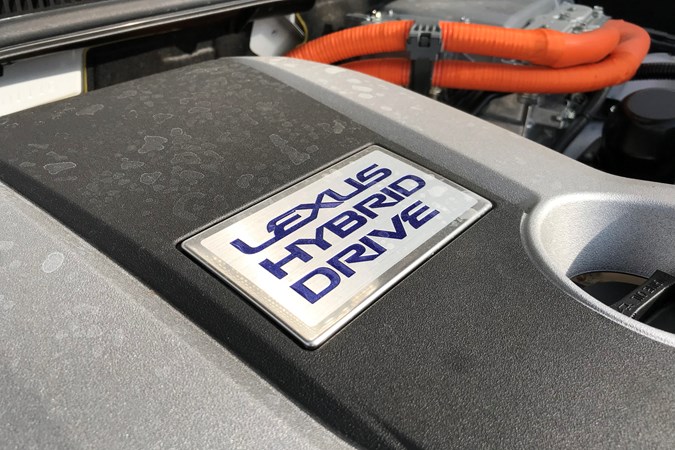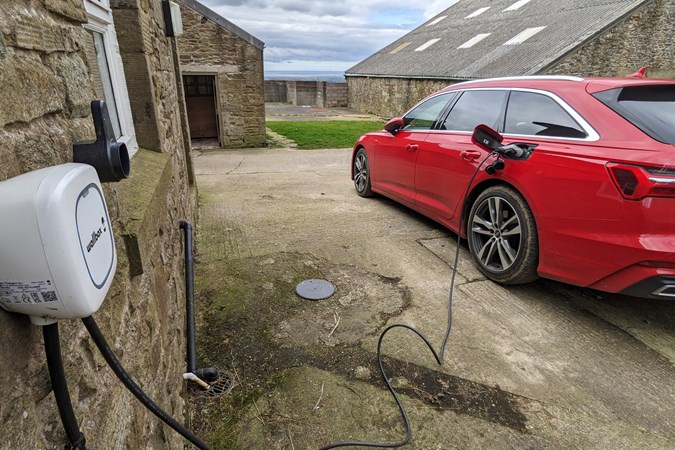Just 10 years ago, if your main priority in a new car was low running costs, you would probably have gone for a diesel. Choose the right model and you’d get 60mpg-plus and free vehicle excise duty. These days, there are more options available to you including various different types of hybrid cars.
Even as the switch to fully electric cars gets into full swing, hybrids are becoming ever more popular, and there are an increasing number of hybrid models available. But working out which hybrid is best for you can be tricky, especially as there are several different types of hybrid system available. Plus there’s the question of whether it’s actually worth getting a hybrid instead of a conventional diesel or petrol car, or just biting the bullet and making the switch to electric.
Here, we’re going to go through the pros and cons of hybrid cars, relative to the other types of powertrain that are available. We’ll also briefly explain what the different types of hybrid system are and how they work. But first, let’s establish in broad terms what a hybrid car actually is.

What is a hybrid car?
In simple terms, a hybrid car has two power sources: a petrol or diesel internal combustion engine and a battery-powered electric motor. At any given moment, the car can be powered by either the engine or battery, or both simultaneously.
There are several systems that recharge the battery including regenerative braking and the engine functioning as a generator – in some hybrids such as the latest Honda Civic, that’s the engine’s sole purpose. Plug-in hybrids can also be recharged using mains electricity or an electric car charging point.
That’s just an outline sketch; scroll down for more detail on how the different types of hybrid system work.
The pros of hybrid cars
Better fuel economy
The best modern hybrids are supremely economical. The latest Honda Civic and Toyota Corolla, both state-of-the-art self-charging hybrids, are capable of 60mpg in everyday driving – the kind of returns that were the exclusive preserve of diesels just a few years ago.
Plug-in hybrids can do even better. They can’t really replicate the sky-high figures achieved in official WLTP testing, but if you regularly recharge the battery the numbers can be startling. In an average week of commuting, our Vauxhall Astra PHEV long-termer bettered 80mpg, helped by plugging it in at the office every day to maximise running on battery power alone. That, of course, costs extra on top of fuel, but charging overnight at home on a discounted tariff claws some of that back.
Lower exhaust emissions
With improved fuel economy comes lower CO2 emissions. According to Honda, the average petrol or diesel car emits between 39 and 41 tonnes of CO2 while driving, throughout its lifetime. Hybrids typically emit around 33 tonnes.
The difference is thrown into sharp relief by the official CO2 emissions figures for the latest Volkswagen Golf, which is available with petrol, diesel and plug-in hybrid power. The 1.5 TSI petrol engine is rated at 130g/km of CO2, the 2.0 TDI diesel emits 118g/km and the plug-in hybrid Golf GTE produces just 27g/km.
Not only is the lower CO2 output better for the environment, it also means lower annual vehicle excise duty (road tax) charges and significantly reduced benefit-in-kind tax bills for company car drivers.
You’re not dependent on public charging
Charging an electric car away from home can still be a real challenge for many drivers. While the public charging infrastructure is growing, there are still many blackholes across the country. Charger reliability also remains an issue, as do the many different payment platforms used by the charger providers. All of that contributes to range anxiety that still puts many people off buying an electric car.
Get a hybrid car, though, and you’re not beholden to the vagaries of the charging network. Even if the battery runs flat while you’re driving, the engine will get you the rest of the way to your destination.

The cons of hybrid cars
They cost more to buy
Hybrid cars’ battery packs, electric motors and associated componentry cost a lot of money, so they’re more expensive to buy to than their simpler petrol and diesel counterparts. The gap is gradually closing, and often masked by carmakers launching new models that are exclusively hybrid powered. But where there are direct comparisons, hybrids remain significantly more expensive.
The issue is most notable with plug-in hybrids. A Citroen C5 X PHEV costs £7,000 more than a petol model, as does a BMW 330e. Fortunately, lower running costs and tax savings can mitigate the extra outlay, but you have to do a lot of miles for the sums to add up.
They’re most efficient on short journeys
Hybrids work best in towns and on short journeys, where you can maximise running on electric power. Even the best plug-in hybrids only have about 60 or 70 miles of EV range, which is fine for a week of commuting but soon runs out on a longer trip.
And when the battery does run out, you’re left with a conventional petrol or diesel car that’s lugging around several hundred kilos of batteries and motors. Your 80mpg hybrid plummets down to 35mpg, which is especially galling when the non-hybrid petrol is considerably more efficient than that.
Not as powerful as petrol or diesel
This isn’t universally true, but there are some notable examples of hybrids that are less powerful than an equivalent petrol or diesel car and therefore don’t perform as well.
Every Toyota Yaris Cross model, for instance, has the same hybrid powertrain with 114bhp, which delivers a 0-60mph time of 10.8 seconds. By contrast, the least powerful version of the Ford Puma has 123bhp and is over a second quicker to 60mph. Such acceleration times aren’t strictly relevant, but the Puma is also appreciably faster in real world scenarios such as joining a motorway and overtaking.
Plug-in hybrids, though, tend to be more powerful than a straight petrol or diesel equivalent – often significantly so. That’s because their bigger batteries can supply more powerful electric motors.

Should you buy a hybrid car?
If you want to move away from a purely petrol or diesel-powered car but aren’t yet ready to make the switch to a fully electric car, a hybrid could be the ideal compromise. You get many of the advantages of electric – low running costs, low emissions – without having to worry about recharging.
While some hybrid cars may not deliver the same performance as a conventional car, the best of them provide a responsive driving experience with high fuel efficiency and low emissions.
What are the different types of hybrid cars?
Mild-hybrid cars
Mild-hybrids are the most common form of hybrid available to buy in the UK and are closest in feel and operation to a traditional petrol or diesel car. That’s because they’re not ‘true’ hybrids, in that they can’t be driven on electric power alone. Instead, they have a small electric motor that boosts power when pulling away, or when coasting on a light throttle.
The aim is to improve fuel economy and CO2 emissions by assisting with the engine’s workload, rather than providing an additional power source to drive to the car.
Full- or self-charging hybrid cars
Self-charging hybrids use a combination of battery and engine to power the car. They don’t need plugging in, only having small batteries that are recharged by on-board systems. They can be driven for short distances on electric power alone at low speed, for instance in car parks and traffic jams. The best self-charging hybrids can return better fuel economy than an equivalent diesel.
Plug-in hybrids
Plug-in hybrids have bigger batteries and more powerful electric motors to complement their petrol or diesel engine. That means they can be driven further on electric power, and at higher speeds – some can manage more than 60 miles at up to 80mph. While on-board systems do send a trickle of charge back into the batteries, their bigger capacity means they need plugging in to fully recharge.
Just so you know, we may receive a commission or other compensation from the links on this website - read why you should trust us.








